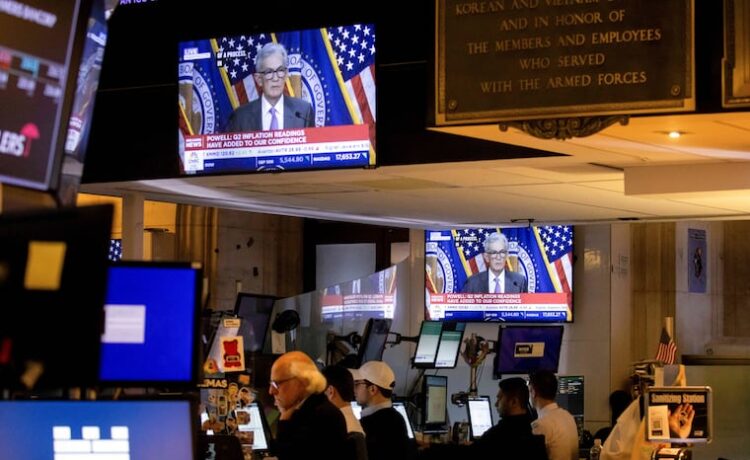The drama playing out in Washington, D.C., since President Donald Trump’s inauguration is hard to follow. Changes to tariff and immigration policy, government worker firings, and cuts to federal funding are coming fast and furious, as Trump looks to reshape government agencies from the U.S. Agency for International Development (USAID) to the Consumer Financial Protection Bureau (CFPB).
Despite the Sturm und Drang over policy and developing economic fallout, investors are nonplussed. Stock prices flirt with record highs almost daily, and the S&P 500 stock index has doubled in the five years since just before the pandemic hit.
House values have also taken off. The Moody’s Analytics national house price index is up more than 50% since just before the pandemic and continues to march higher.
Surging stock prices and house values have fueled a remarkable increase in household wealth. Household net worth — the difference between the value of what households own and what they owe — has increased a jaw-dropping $56 trillion since just prior to the pandemic.
This has unleashed a powerful wealth effect — the change in consumer spending driven by a change in household wealth. The idea is straightforward. Households with growing wealth are financially more secure and thus more able and willing to spend from their incomes. That is, they save less than they would otherwise.
A rule of thumb is that a sustained and broad-based appreciation in asset prices, like we’ve been enjoying, is consistent with a wealth effect of two cents. That is, for every $1 increase in net worth, consumer spending ultimately increases by two cents.
That may sound insignificant, but do the math. Last year, the wealth effect added a full percentage point to consumer spending growth. That means about one-fourth of the growth in GDP last year — the value of all the goods and services we produce — was powered by greater household wealth.
Stretched valuations
There’s nothing to worry about if stock prices and housing values at least continue to hold their own. The wealth effect will moderate and so too will consumer spending and the overall economy. Not a bad outcome.
But the threats to this sanguine outlook are consequential at a time when asset prices appear at best richly valued, or even overvalued and bordering on frothy.
Take valuations in the stock market. The prices of stocks are extraordinarily high compared with the corporate profits that ultimately determine their value. The only other non-recessionary time they were higher was in the dot-com bubble.
Times are different now. The handful of technology companies powering this stock market’s run are minting profits and riding a rare technological wave. Nonetheless, the rest of the stock market is also richly (over-) valued.
Asset price valuations are high for a reason — businesses are making lots of money and have done a good job managing their debts.
However, investors appear increasingly cavalier in their assessment of the risks.
Consider Trump’s newly minted meme coin. This is a cryptocurrency unveiled by the President on social media soon after his inauguration. Its price at once rocketed to over $70 a coin, and while it has been swinging wildly since, it is currently trading at close to $17. Despite the slide, the total market capitalization of the coin is still an eye-popping $3.4 billion.
This is unadulterated speculation — think Dutch tulip bulbs or Beanie Babies on steroids. It is tough to see other asset markets completely inoculating themselves from this greater fool mania.
Catalyst for a correction
Asset markets are stretched and vulnerable to a significant correction. But when asset prices are supported by momentum investors, they don’t cave under their own weight.
There has to be a catalyst. A push is required — although the more stretched the valuations, the softer the needed push. A geopolitical misstep or even a bum earnings report from one of the high-flying tech companies might be sufficient.
The most likely and most immediate push could be from U.S. tariffs and a resulting global trade war. Trump seems to be increasingly looking to tariffs as an ongoing source of revenues. If so, other countries are more likely to retaliate with their own tariffs and trade restrictions.
Publicly traded U.S. companies recently reporting their fourth-quarter earnings are taking note and planning for a trade war.
Investors continue to hold the belief that Trump will either not follow through on broad-based tariffs, or implement them and quickly pull back if the stock market and economy begin to stumble. That was his modus operandi in his first term.
But a hall-of-mirrors syndrome may be taking hold, where the president watches the stock market for guidance on how far to take the trade war, but stock investors hold on and don’t provide that feedback, thinking the president will relent in time to save them from losses. This is a fragile dynamic.
And fragile is an increasingly fitting description for how asset markets and the economy feel.

